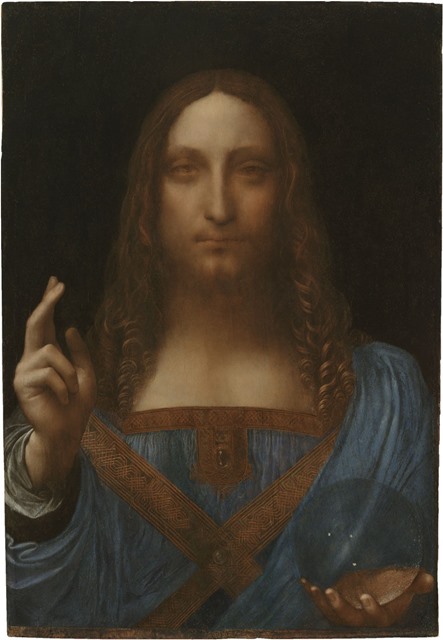
The real Salvator Mundi has been hidden from view since its record-breaking purchase at auction in 2017—but a miniature version of the $450 million painting is going on view in London this week.
The contemporary twist on the famous Renaissance work comes courtesy of artist Simon Fujiwara. To create the Salvator Mundi Experience, the English artist hung several scaled-down reproductions inside a model museum just large enough for one person to stand in at a time. Fujiwara created the 360-degree experience with London-based architect David Kohn. The work is a part of a group show pairing artists with architects that opens on Thursday, February 14 at Whitechapel Gallery.
“At the miniature scale, the visitors’ relationship to the painting and the story changes greatly,” the Berlin-based artist tells artnet News. “What was at first a story about massive figures and global politics becomes small and suddenly under one’s control.”
The world was expecting to see the blockbuster masterpiece unveiled at the Louvre Abu Dhabi last September, just under a year after it sold at Christie’s in 2017. But so far, the display has been indefinitely postponed without explanation. (Salvator Mundi gained further notoriety last fall when evidence grew that its reported buyer, Saudi Arabia’s Crown Prince Mohammed bin Salman, ordered the death of the dissident journalist Jamal Khashoggi—and yet again when the painting became entangled in a conspiracy theory about #Russiagate.)
Fujiwara and Kohn wanted to strip the painting bare of the controversy, hype, and mystique that surrounds its attribution, ownership, and whereabouts. “It’s a major public interest story that is designed to attract maximum attention, but at its core it is totally vacuous and empty,” the artist says.
Inside The Salvator Mundi Experience. Copyright Simon Fujiwara and David Kohn Architects, image courtesy of the Whitechapel Gallery.
Fujiwara’s art often unpacks popular narratives, like the Salvator Mundi saga, while at the same further mythologizing them. Recently, he recreated Anne Frank’s hideaway house inside a Tel Aviv gallery.
But the artist is not particularly interested in seeing the real Salvator Mundi, or in the fuss generated by its exorbitant price tag. Instead, he wants to reframe viewers’ relationship to the composition. He hopes that looking at the painting in miniature, within its own diminutive museum, will encourage them to feel less cynical and more “tender” towards the work. “The madness of it is contained,” Fujiwara says. “It’s like looking at something that happened in the past. You come accept it.”
The Salvator Mundi Experience is one of ten commissioned installations and pavilions created by leading artists in collaboration with architects for the Whitechapel Gallery’s exhibition “Is This Tomorrow?”
Organized by curator Lydia Yee, the show is a futuristic update of its groundbreaking 1956 exhibition of the same name. Collaborations in the latest iteration include the British architect David Adjaye and Canadian artist Kapwani Kiwanga; Chinese artist Cao Fei and Chinese architectural firm mono; and Bangladeshi architect Marina Tabassum and artist Rana Begum.
“Is This Tomorrow?” is on view from February 14 through May 12 at Whitechapel Gallery in London.